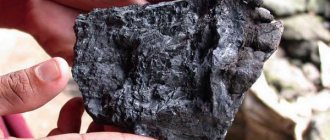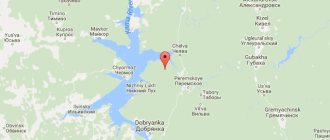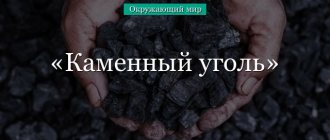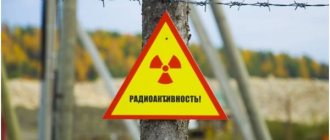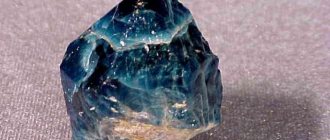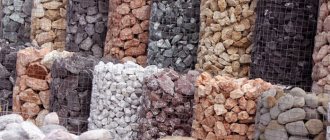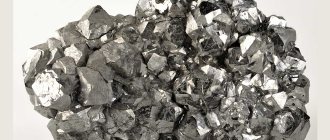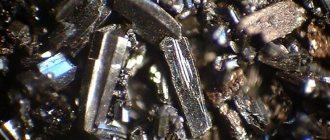Even in the early stages of his development, Homo sapiens actively used the resources that nature provided him. At first it was what was in sight - water, wood, stones. Later, people began to increasingly ask themselves the question: what useful things could be hidden underground? And the depths of our planet presented him with many pleasant surprises.
This article is dedicated to the mineral resources of the Earth. In particular, we will talk about the main types of minerals that are distinguished by modern geological science. Where are they mined, and in what sectors of the economy are they used? And what types of minerals are considered the most valuable and in demand today?
Mineral wealth of the Earth
In the depths of our planet lie hundreds, if not thousands of different types of minerals. Some of them are harder than steel (such as diamonds), while others crumble and crumble from the slightest blow (a striking example is kaolin). Certain types of extracted minerals are in a liquid (oil) or gaseous (natural gas) state of aggregation. Their development is carried out using a system of special wells.
Minerals in the earth's crust can be in the form of placers, nests, layers, lenses or veins. Clusters of several deposits often form entire basins, provinces, and ore fields. The development and extraction of mineral resources is carried out by a separate branch of science and technology called mining.
What types of minerals do scientists identify today? We will talk about this in more detail in the next section of our article.
Types of minerals
The genesis of certain mineral substances and compounds can be completely different. For example, the origin of many ores is associated with magmatic processes occurring deep in the earth's crust. But oil was formed from the remains of plants and animals that died millions of years ago. Therefore, it is quite logical to distinguish two types of minerals:
- Organic.
- Inorganic.
There are a number of other classifications. Thus, according to their state of aggregation, solid, liquid and gaseous minerals are distinguished, according to the conditions of occurrence in the earth’s crust - sheet, vein, etc. The following types of minerals are also distinguished according to their origin and conditions of formation:
- Endogenous (formed at great depths in the earth's crust).
- Exogenous (formed on the surface of the lithosphere - at the bottom of lakes, swamps, seas or oceans).
- Metamorphic (substances formed under the influence of ultra-high temperatures and pressure).
There is another, generalized classification. Thus, according to it, the most important types of minerals are fuel (or combustible), ore (metal) and non-metallic. Sometimes raw materials for the construction industry are classified as a separate subclass. We will dwell on these 3 types of minerals in more detail.
Concepts and terms related to the topic
Before examining the types of minerals, it is necessary to know the specific definitions related to this topic. This will make it easier and easier to figure everything out. So, minerals are mineral raw materials or formations of the earth’s crust, which can be of organic or inorganic origin and used in the production of material objects.
A mineral deposit is the accumulation of a certain amount of mineral matter on the surface or in the interior of the Earth, which is divided into categories depending on the field of application in industry.
Ore is a mineral formation that has arisen in natural conditions and consists of such components and in such a ratio that its use is possible and advisable for the industrial and technical sphere.
Fossil fuels
Combustible (or fuel) minerals are a type of mineral resource characterized by the property of combustion. And they are used mainly as a source of thermal energy. The main types of fuel minerals include oil, natural gas, hard and brown coal, peat, anthracite and oil shale.
The combustion of all of the above types of fuel releases large amounts of energy. This is facilitated by carbon, which is contained in all, without exception, combustible minerals. It is impossible to imagine the life of a modern city without oil, from which gasoline is obtained, or without gas, which is used to heat many residential buildings. Coal is widely used in heavy industry, in particular in thermal power engineering and ferrous metallurgy.
1.Oil is the “black gold” of the Earth
It is not for nothing that it is called “black gold”, because with the development of the transport industry, the life of human society began to directly depend on its production and distribution. Scientists believe that oil is a product of the decomposition of organic residues. It consists of hydrocarbons. Not many people realize that oil is part of the most common and necessary things for us.
In addition to being the basis of fuel for most types of transport, it is widely used in medicine, perfumery and the chemical industry. For example, oil is used to produce polyethylene and various types of plastic. In medicine, oil is used to produce petroleum jelly and aspirin, which is essential in many cases. The most surprising use of oil for many of us is that it is involved in the production of chewing gum. Solar batteries, which are indispensable in the space industry, are also produced with the addition of petroleum. It is difficult to imagine the modern textile industry without the production of nylon, which is also made from oil. The largest oil deposits are located in Russia, Mexico, Libya, Algeria, USA, and Venezuela.
Metal ores
Metals are present in many things we use every day: cars, laptops, mobile phones, household appliances and even the most common light bulbs. Moreover, most often these are not pure metals, but alloys created artificially by man. Thus, widely used steel is an alloy of iron with carbon and some other elements (for example, manganese). But the very first stage in the production process of any metal or alloy is the extraction of the necessary ore raw materials.
There are five main types of ore minerals. This:
- Ferrous metals (iron, chromium, manganese).
- Non-ferrous metals (copper, aluminum, nickel).
- Rare metals (tungsten, molybdenum, tin).
- Radioactive compounds (radium, uranium).
- Noble metals (gold, silver, platinum).
The greatest importance for humanity at the present stage of its development are iron ores (as the basis for the production of various alloys), as well as aluminum and copper-nickel ores. In particular, the presence in the depths of the country of large deposits of non-ferrous metals largely contributes to its technical progress. After all, they are widely used in electrical engineering, aircraft manufacturing, astronautics and the production of high-precision instruments.
Non-ferrous metals
The group of non-ferrous metals includes a large number of minerals. The name of the group comes from the fact that many metals have a specific color. For example, copper is red, aluminum is silver. The remaining 3 types of minerals (noble, rare, radioactive) are essentially a subtype of non-ferrous metals. Many of them are mixed into alloys, because in this form they have better properties.
Non-ferrous metals are classified into:
- heavy – highly toxic with high atomic weight: lead, tin, copper, zinc;
- light, having low density and weight: magnesium, titanium, aluminum, calcium, lithium, sodium, rubidium, strontium, cesium, beryllium, barium, potassium;
- noble ones, due to their high resistance, practically do not enter into chemical reactions, are beautiful to look at: platinum, silver, gold, rhodium, palladium, ruthenium, osmium;
- small (rare) – antimony, mercury, cobalt, cadmium, arsenic, bismuth;
- refractory have a high melting point and resistance to wear: molybdenum, tantalum, vanadium, tungsten, manganese, chromium, zirconium, niobium;
- rare earth - the group consists of 17 elements: samarium, neodymium, lanthanum, cerium, europium, terbium, gadolinium, dysprosium, erbium, holmium, ytterbium, lutetium, scandium, yttrium, thulium, promethium, terbium;
- scattered ones are found in nature only in the form of impurities: tellurium, thallium, indium, germanium, rhenium, hafnium, selenium;
- radioactive ones independently emit a stream of radioactive particles: radium, plutonium, uranium, protactinium, californium, fermium, americium and others.
Aluminum, nickel and copper are of particular importance to humanity. Developed countries are striving to increase their production, since the amount of these non-ferrous metals directly affects technical progress in aircraft construction, astronautics, atomic and microscopic devices, and electrical engineering.
Non-metallic minerals
Nonmetallic mineral raw materials are a type of minerals that do not contain metals and are used primarily in the construction industry. In total, this group contains about 100 names of rocks and minerals. And the current volumes of extraction of non-metallic mineral resources are quite large.
There is no single and generally accepted classification of non-metallic minerals. Here it is customary to highlight:
- Mining raw materials (asbestos, graphite, talc).
- Chemical raw materials (potassium salt, native sulfur, phosphorites).
- Building materials (limestone, sand, marble, granite, sandstone, tuff, clay and others).
- Piezo-optical raw materials (Iceland spar, quartz, optical fluorite).
- Precious and semi-precious stones (labradorite, sapphire, ruby, amethyst, opal and others).
Geography of the planet's mineral resources
The distribution of certain minerals on the surface of our planet is associated, first of all, with the geological structure of the territory. Thus, on the shields of ancient platforms there are numerous deposits of ferrous and non-ferrous metals. But significant deposits of oil, gas, coal, and salt are confined to the zones of marginal and foothill troughs. Non-metallic minerals are dispersed everywhere: both within folded (mountain) areas and within platform areas.
On geographic maps, deposits of mineral resources are indicated with special graphic symbols and signs. Moreover, each mineral has its own designation (see photo below). So, for example, coal is designated by a filled square, salt by an empty square, iron ore by a black equilateral triangle, and so on.
Next, we offer a brief overview of the most valuable and in demand types of mineral resources today. These are oil, gas, coal, iron ore, gold and diamonds.
Main deposits
Various mineral resources (minerals) are distributed fairly evenly across the planet according to geological features. After all, a significant part of them is formed due to platform movements and tectonic eruptions. There are several main continents that are richest in almost all types of raw materials. This:
- North and South America.
- Eurasia.
- Africa.
All countries located in the designated territories widely use minerals and their properties. Export supplies go to the same areas that do not have their own raw materials.
In general, of course, it is difficult to determine the general plan of mineral resource deposits. After all, everything depends on the specific type of raw material. Some of the most expensive are precious (containing noble metals) minerals. Gold, for example, is found everywhere except Europe (of the continents listed above plus Australia). It is highly valued, and its extraction is one of the most common phenomena in mining.
Eurasia is the richest in combustible resources. Mountain minerals (talc, barite, kaolin, limestone, quartzite, apatite, salt) are distributed almost everywhere in large quantities.
Oil and gas
If you list the types of minerals that are used by humans today, the number will go into hundreds, or even thousands. The mineral resource potential of the earth's interior is simply amazing! But few would argue with the fact that the most important types of minerals, as of the first quarter of the 21st century, are oil and natural gas.
Oil is often called black gold, thereby emphasizing the importance and value of this resource. This fuel is in demand all over the world, and some countries replenish their budgets well from its sales. Petroleum is the most important mineral resource for North Africa and South-West Asia. The world leaders in terms of total reserves of this mineral are Saudi Arabia, Venezuela, Iran, Iraq and Canada.
Oil production brings enormous profits to countries. Oil is extracted from the depths of the Earth in three main ways:
- Mechanical.
- Fountain.
- Slantsev.
The most common is the mechanical (or pumping) extraction method. To do this, wells are drilled, after which the oil is pumped out using powerful compressor equipment. It is worth noting that black gold is mined not only on land, but also at sea. For this purpose, special floating platforms are installed on the water.
Gas deposits are often discovered near oil deposits. Together they often form entire oil and gas bearing areas and provinces, occupying significant areas. Natural gas means a mixture of several gases (methane, propane, butane and some others), which is formed in the thickness of the earth’s crust as a result of anaerobic decomposition of organic substances. It is extracted from the bowels of the planet using wells, the depth of which can reach several kilometers.
Classification of resources by exhaustibility
In addition to the gradation of minerals according to their physical state and characteristics, indicators of their exhaustibility and renewability are considered. The main types of minerals are divided into:
- exhaustible, which at a certain moment may run out and will be unavailable for production;
- inexhaustible – relatively inexhaustible sources of natural resources, for example, solar and wind energy, oceans, seas;
- renewable - fossils that, at a certain level of depletion, can be partially or completely restored, for example, forests, soil, water;
- non-renewable - if resources have been completely exhausted, it is usually not possible to renew them;
- replaceable – fossils that can be replaced if necessary, for example, fuel types.
- irreplaceable – those without which life would be impossible (air).
Natural resources require careful treatment and rational use, since most of them have an exhaustible limit, and if they are renewable, it will not be very soon.
Minerals play an important role in human life. Without them, there would be no technical and scientific discoveries, or even normal life in general. The results of their extraction and processing surround us everywhere: buildings, transport, household goods, medicines.
Coal
Fossil coal is one of the most abundant mineral resources in the world. Its deposits have been found on all continents of the Earth. But the following countries have the largest coal deposits: the USA, China, Russia, India and Australia.
Depending on the carbon content, there are three main types of this mineral:
- Brown coal (up to 65-70% carbon).
- Hard coal (75-95%).
- Anthracite (more than 95%).
The color of coal varies from brown to dark gray and black.
Coal is extracted from the bowels of the planet in two main ways:
- Closed.
- Open.
The closed (or mine) mining method is used at significant depths of coal seams (over 100 meters). For this purpose, mines or adits are built. The main advantage of this mining method is environmental friendliness. Coal mines cause much less harm to the environment than quarries or open pit mines. At the same time, mining is extremely dangerous to the health and life of workers.
The open-pit (or quarry) mining method is used in cases where coal seams are located as close as possible to the surface of the earth. In this case, the upper layer of the earth's crust (including soil) is opened and direct development of the field begins. The rock is crushed using special machines (draglines and crushers) and transported to the surface. Among the advantages of the open coal mining method are efficiency and relative safety. However, quarries “eat up” huge areas of land and cause enormous harm to the environment. Plus, coal extracted in this way usually contains a large number of different impurities.
Iron ore
Iron ores are natural mineral formations with an iron (Fe) content of 10% to 75%. In total, two hundred minerals are known to contain iron. But the most important of them are magnetites and hematites. Ores with an iron content of up to 45% are considered poor and require additional enrichment.
Iron ore serves as the main raw material for ferrous metallurgy. The main part of it goes to the production of cast iron and rolled steel. The largest suppliers of iron ore to the world market are India, China, Ukraine, Russia, Brazil, Kazakhstan and Australia. These countries account for over 80% of global production.
The extraction of this mineral is carried out in mines and quarries (less often in mines). High-grade ores are immediately sent to open-hearth and converter shops for steel smelting. Poor ores with low iron content need beneficiation. This process is carried out at special mining and processing plants (GOKs). First, the ore extracted from the bowels of the earth is crushed, and then the resulting mass is sent to a magnetic separator, which “pulls” iron particles out of it. After this, the enriched ore is sintered into small pellets (8-15 mm in diameter) and sent to metallurgical plants.
Global iron ore production is growing rapidly. If in 2001 about 1 billion tons of this raw material were extracted, then in 2010 this figure already amounted to 2.4 billion tons. True, some highly developed countries are gradually reducing their consumption of iron ore and moving to recycling the scrap metal they already have.
Ore (igneous) rocks
This group includes the most important and largest mineral resources in terms of production volumes. Ore is a formation of a mineral nature that contains a large amount of one or another desired metal (another component).
Places where such raw materials are extracted and processed are called mines. Igneous rocks can be classified into four groups:
- ferrous metals;
- colored;
- noble;
- non-metallic components.
Let us give examples of some ore mineral resources.
- Manganese ores.
- Iron.
- Nickel.
- Argentite.
- Cassiterite.
- Beryl.
- Bornite.
- Chalcopyrite.
- Uraninite.
- Asbestos.
- Graphite and others.
Gold
There is probably no person on Earth who has not heard the word “Klondike”. This region of Alaska has become a household name for a place full of precious treasures. At the end of the 19th century, colossal deposits of gold were discovered here. And thousands of adventurers went to a wild and distant land in search of him. A lucky few managed to get there and find a priceless yellow treasure.
Gold is still the most valuable metal on Earth today. Most often it is used in the jewelry industry and as an investment object. Gold bars are considered the most reliable way to save your savings. In addition, the noble metal is also used in microelectronics, dentistry and the food industry.
Throughout history, humanity has extracted about 160 thousand tons of gold from the earth. In monetary terms, this is an amount equal to approximately 8 trillion US dollars. The leaders in gold mining in the world are the following countries: China, Russia, Australia, USA, South Africa, Peru, Canada. Today there are 37 gold mining companies operating in the Russian Federation. They are located in Buryatia, Amur and Irkutsk regions, Transbaikalia, Krasnoyarsk Territory, the Republic of Tyva and some other regions of the country.
Diamonds
Diamond is a natural mineral, a form of carbon. It is characterized by extremely high hardness and thermal conductivity. A cut diamond is commonly called a diamond. For quite a long time it has been the most expensive and valuable decoration. True, the price of diamonds is largely due to the extremely high degree of monopolization of this market in the global economy.
In addition to jewelry, diamonds have found their use in electronics, aerospace and nuclear industries. Due to the exceptional hardness of the mineral, it is used in the production of heavy-duty drills and cutters.
Diamonds are Africa's most important mineral resource. At least some of its countries. Thus, every second diamond in the world is mined in four countries of the “dark continent”. These are Namibia, Botswana, South Africa and Tanzania. Other large importers of the most durable mineral are India, Russia, Angola, and Canada.
On the territory of Russia, the first diamond was found by the serf Pavel Popov in the Perm province. For such a valuable find he was granted freedom. Subsequently, large kimberlite pipes were discovered in Yakutia, as well as significant deposits in the Krasnoyarsk Territory and the Arkhangelsk Region.
10. Uranium-radium ores - dangerous energy
They are of great importance in the modern world, as they are used as fuel in nuclear power plants. These ores are mined in South Africa, Russia, Congo and a number of other countries.
It’s scary to imagine what could happen if, at this stage of its development, humanity loses access to the listed natural resources. In addition, not all countries have equal access to the Earth's natural resources. Natural resource deposits are not evenly distributed. Often it is because of this circumstance that conflicts arise between states. In fact, the entire history of modern civilization is a constant struggle for the possession of valuable resources of the planet.
Rock salt
When talking about the most popular minerals, one cannot fail to mention salt. The value of this mineral and food product is extremely high. In ancient times, salt often served as money of account. It is vital for any human body. Salt deficiency is accompanied by weakness, headaches and nausea.
The chemical formula of this mineral is NaCl (sodium chloride). In nature it occurs in the form of colorless transparent crystals. Kitchen salt is obtained in several ways. Actually, rock salt is mined using the mine method. The mineral is also obtained by boiling liquid brine solutions.
In total, about 200 million tons of salt are mined in the world per year. The largest producers of this product are countries such as the USA, China, India, Canada, France, Germany, Russia, Ukraine, Chile. The oldest saltworks were discovered by archaeologists on the Black Sea coast (modern Bulgaria). Scientists have found that salt began to be mined here in the sixth millennium BC.
Gold is an ore mineral
There are also special minerals among the ores. Gold, for example. Its extraction has been relevant since ancient times, because it has always been highly valued by people. Today, gold is mined and laundered in almost every country that has at least small deposits of it.
In nature, gold occurs in the form of native particles. The largest ingot was found in Australia, weighing almost 70 kg. Often, due to the weathering of deposits and their erosion, placers in the form of sand grains of this precious metal are formed.
It is extracted from such mixtures by washing and sifting. In general, these are not very common and voluminous minerals. That is why gold is called a precious and noble metal.
The centers for the extraction of this ore mineral are:
- Russia.
- Canada.
- South Africa.
- Australia.
